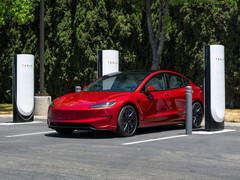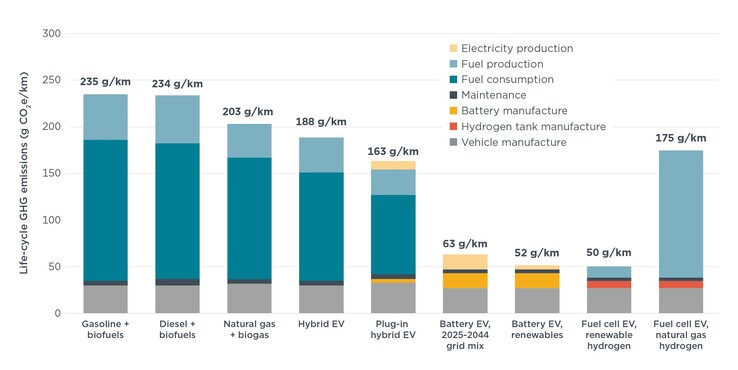Electric cars emit 73% fewer greenhouse gases during their production and lifetime of usage than cars powered by diesel or gasoline, according to a new study.
Contrary to popular myths, this includes both battery production and the emissions that stem from charging at the current and projected grid energy mix. If charging is done mainly with electricity generated by renewable energy sources, EV emissions are even lower than gas-powered cars in the same category.
According to the International Council on Clean Transportation (ICCT), the mass electric vehicles sold this year in Europe will emit 63 grams of CO2 equivalent per kilometer over its life cycle, with production emissions included. A gas- or diesel-powered vehicle's emissions, on the other hand, will be roughly equal to each other at 234-235g CO2/km.
Hybrids and plug-in hybrids emit 20% and 30% fewer greenhouse gases during their lifetime of production and usage, respectively, while the lowest emissions go to cars powered by renewable hydrogen, which is a rather exotic category. For the study, the ICCT took the most representative production and real-life usage scenario.
Not accounting for the expected changes in the electricity mix inflates the estimated life-cycle emissions of BEVs and slightly increases those of PHEVs. Further, considering only a portion of the average 20-year lifetime of passenger cars in the European Union overestimates the vehicle and battery production emissions allocated per vehicle kilometer across all powertrain types, albeit with a larger impact for BEVs than for other powertrains. Similarly, underestimating the usage phase by not accounting for the discrepancy between real-world and test fuel and electricity consumption benefits gasoline, diesel, and natural gas ICEVs and HEVs more than BEVs and FCEVs.
Perhaps the biggest surprise for the ICCT was that electric vehicles have gotten much greener than gas cars much faster than the previous edition of the study suggested, to the tune of 24% fewer lifetime emissions compared to the same analysis done four years ago.
Electric cars still emit 40% more during their manufacturing phase, but the extra greenhouse gases that go in the atmosphere, mainly on account of their battery assembly, are quickly offset during use.
In fact, it now takes 17,000 km, or a bit over 10,500 miles for an electric car to become cleaner than a gas vehicle, and the gap only becomes wider from there. Previous studies pegged that green threshold at 5,000 miles more, but battery chemistries, EV production methods, and grid mixes are constantly improving.













